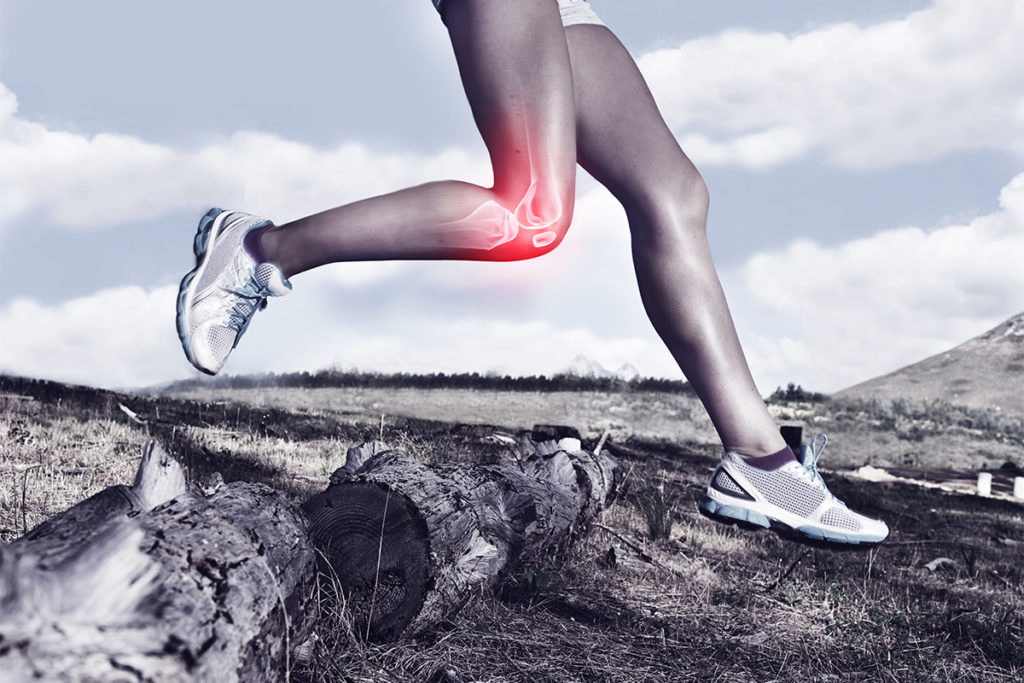Diastasis Recti: When the Abs Don’t Come Together
Why you should know the biomechanics of abdominal separation.
Things your clients may split:
- a training session, with a friend
- their pants, while doing a deep squat
- their abdominal muscles
Sometimes an unnatural divide can develop between the two sides of the rectus abdominis muscle bundles, a condition doctors call diastasis recti. It’s usually associated with pregnancy, but it can happen to men and children in addition to moms-to-be. If you have clients suffering from diastasis recti, chances are they are going to be interested in how the separation came about and how they can fix it.
A lot of factors can cause the abdominal muscles to separate. It occurs in both genders and at different phases of life, so no situation (like a growing uterus) or set of hormones (like those linked to pregnancy) applies in every case of diastasis recti. This is why it is more helpful to consider the biomechanics of diastasis recti: What are the loads, which tissues are supposed to handle the loads, and why are these tissues failing to do their job?
A Core Anatomy Refresher
To best understand this issue, it is important to upgrade your knowledge of core anatomy. In most anatomy coursework, trunk musculature is presented simply—with the aponeuroses (flat, bilayered tendons) of the transversus abdominis, obliques and rectus abdominis all attaching to a vertical strip of connective tissue called the linea alba.
But really, the linea alba is not precisely “where the stomach muscles connect.” Instead, the linea alba is an area created by the basket-weaving effect that happens when the abdominal muscles’ aponeuroses move from one side of the abdomen to the other.
But what causes the physical separation? It results from the contents of the abdomen pushing against the linea alba tissues, causing them to thin and allowing the rectus abdominis bundles to separate. The pressure might come from a baby during pregnancy or simply from regular old guts. Yet the overload to the linea alba tissue comes not from these masses alone, but additionally from the way that various postures or movement habits create unnecessary forward displacement of the abdominal contents. Tissue overload can also occur from continually high intra-abdominal pressure, like forces created from a Valsalva maneuver when lifting heavy weight or years of sucking in your stomach for vanity’s sake.
The front of the bottom rib should line up with the pelvis. Your clients can be cued to adjust their ribs throughout the day for all-day core muscle firing.
Alignment and
Abdominal Loads
It is important to consider how postural alignment affects tissue loads, especially in the case of diastasis recti. An anteriorly displaced pelvis (thrust) can increase the load to the linea alba, as can an elevated rib cage. Both of these postural habits increase the abdominal contents’ pressure against the linea alba and change the angle of the core’s muscular attachments. Altered abdominal geometry decreases the rectus abdominis’s leverage, making it more difficult for this muscle to deal with the constant load.
Of course, the human body can safely move through many positions that increase intra-abdominal pressure or displace the ribs and pelvis. Problems arise when these kinds of postures are used excessively throughout the day, for years or decades.
Give Your Client an Alignment Makeover
Alignment adjustment #1. Backing the pelvis up until it stacks vertically over the ankles is a simple and instant way to decrease the load to the anterior abdomen. In bare feet or zero-rise (minimal) footwear, clients should be instructed to back the pelvis up until the hip joints stack vertically over the ankle joints. It should be easy to lift the toes.
Alignment adjustment #2. The most inferior bony protrusion of the anterior rib cage—the lowest part of the rib cage on the front of the body—should stack up just above the anterior superior iliac spine of the pelvis. The habit of lifting the chest to achieve “good posture” or to aid in flattening the appearance of the stomach is a large contributor to diastasis recti. Lowering the ribs until the sternum is perpendicular to the ground can, like adjusting the pelvis, instantly decrease the load to the linea alba. (Making this adjustment will also alert clients to the shoulder girdle tension lurking in the body. Rib thrusting is a common, often subconscious skeletal adjustment to mask hyperkyphosis and unyielding tightness in the chest musculature.)
Do More Than Just
Suggest Exercises
Postural advice might not seem as effective as specific exercises to target core muscles, but if you don’t alert your clients to the habits that created the separation in the first place, they could be chasing repair indefinitely. The time they spend standing or walking in their improved alignment will typically exceed the time they’ve set aside for exercise. They’ll thank you for alerting them to new ways to load the body outside of your private sessions.
Get Muscle to Lengthen
The muscles that create the walls of the abdomen should be strong as well as supple. Hypertonicity of the muscles—meaning the muscles do not lengthen properly—will exacerbate abdominal separation. Imagine your guts pressing forward into the anterior abdominal wall. Ideally, the rectus abdominis should lengthen in response to this increase in pressure. When the the muscle does not lengthen easily, the forward pressure of the abdominal contents has no choice but to concentrate on the weaker area between the two “pillars” of tension—the linea alba.
A Spinal Twist . . . Kind Of
The simplest way to measure and correct abdominal muscle yield is with a spinal twist. But in the case of diastasis recti, the spinal twist can worsen the problem if not done within very specific parameters.
Parameter #1. The thrust of the rib cage must be eliminated before beginning a twist. This means the head, neck and shoulders should be bolstered with a blanket or two (or three) to keep the rib cage in line with the pelvis. This will prevent oblique angles of pull on the abdominal muscles.
Parameter #2. The twist should go only as far as clients can take it without muscling or forcing the body. This ensures they are on the “edge” of the resistance created by their relaxed muscle and can apply a very gentle tensile load, preventing further linea alba distortion.
A spinal twist should not be confused with a spinal “roll.” Technically speaking, the greatest rotation during a spinal twist occurs at the bellybutton. The rib cage and the pelvis should rotate on the same axis, but in opposite directions. What most people tend to do is anchor a knee to the floor and rotate the entire spine away from the leg. For a twist to be an effective corrective exercise for diastasis recti, an actual “twist” needs to occur.
Start your client on her back, with head and shoulders bolstered if necessary, and have her slide her pelvis a couple of inches to the right. Cue her to bring the right knee directly over the hip and then slowly twist her pelvis to the left until she finds the boundary created by her passive muscular resistance. If possible, bolster the knee at that height and allow her to relax the abdomen and spinal muscles. Over time (minutes, weeks or months), her abdomen will yield more and more, creating a greater twist. Repeat on the other side.
This exercise, in conjunction with your client’s new alignment habits, will be very effective at halting and then improving abdominal separation.
It’s More Than How It Looks
A client who approaches you about an abdominal separation will understandably be concerned about its appearance. When you’ve got a big hole in your abdomen, the guts inside are anterior to where the abdominal wall should be, creating a bulge that a thousand crunches can’t repair. While there are cosmetic benefits to repairing split abs, however, it is perhaps more motivating to be aware of the serious health issues associated with diastasis recti—pelvic organ prolapse, pelvic girdle pain, inguinal hernia and abdominal aortic aneurism.
Educating your clients on the mechanics of diastasis recti, providing them with simple corrective measures and teaching them physical adjustments they can practice throughout the day will make you the go-to person for this issue. You’re not only giving clients nicer-looking abs; you’re potentially helping them improve some major health outcomes. In the end, that’s really the bigger picture—better health through movement!
Katy Bowman, MS, is an internationally recognized biomechanical scientist and the director of The Restorative Exercise Institute. She is the author of Every Woman’s Guide to Foot Pain Relief: The New Science of Healthy Feet BenBalla Books 2011) and the creator of the Aligned and Well DVD series. Read more at www.alignedandwell.com
´╗┐
Many people confuse activating their transversus abdominis with sucking and tucking in their belly. This is an easy mistake to make, as both moves will flatten the abdomen at the bellybutton. Differentiating between the two is necessary in all cases, but especially when abdominal separation is present, as a regular “suck-and-tuck” habit creates unnatural intra-abdominal pressures that can worsen diastasis recti.
To help a client clear up the difference, try this: Place the client on his hands and knees and have him relax his belly all the way to the ground. The pelvis should untuck fully, giving the spine a “swayback” appearance. Cue him to draw his bellybutton up without inhaling or without moving his pelvis. Watch the pelvis—it should not tuck at all, as the transversus abdominis cannot create this pelvic motion. If it does, your client is confusing a pelvic tuck with innervating the core muscles—a habit that can contribute to abdominal separation. For best results, teach this in front of a mirror so the client can see whether he tucks or not. This will enable to him to correct the movement when you aren’t present.
´╗┐
Despite great advances in our understanding of core conditioning, abdominal “crunch” exercises are still the go-to ab workout for most people. However, this move is a no-no for those with abdominal separation, because crunches increase intra-abdominal pressure, which becomes problematic.
Better moves for core strength include those that engage the transversus abdominis with a lengthened torso; for example, a yoga “plank” or whole-body balance challenge that naturally engages the muscular core. Remember to cue your client on rib positioning. The core muscles can only innervate fully as a group if the geometry of the muscular attachments sets them up for best leverage.
References







